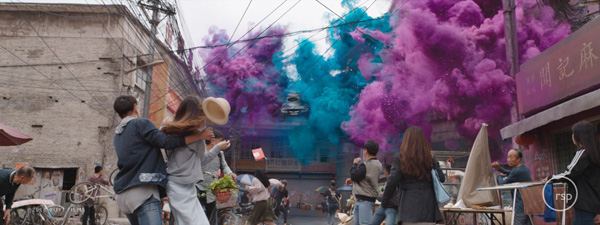
'Animal World' is a Chinese blockbuster movie that features roughly 1,000 complex VFX shots, ranging from creature effects and animation to fantasy environments. A fantasy adventure film based on a manga story, the movie debuted at the 2018 Shanghai International Film Festival before it was released internationally.
The director Yan Han worked with production VFX supervisor John Dietz, whose company BangBang Productions has supplied the visual effects support for a number of major films made in China in the last few years. These include Jiang Wen’s 'Gone with The Bullets', 'Impossible' by Sun Zhou and 'The Crossing' from John Woo. For 'Animal World', he commissioned 14 vendors and worked between their teams and the production, from pre-production to delivery.
Rising Sun Pictures was one of the vendors, producing 86 shots for seven major sequences in 'Animal World' that called on the creative and technical skills of the entire team at the studio including creature animation, environmental work, CG FX and simulations, and 2D and 3D compositing. Digital Media World was fortunate enough to interview John Dietz as well as several members of RSP's team.
Closing the Gap
John and BangBang have the highly specialised job of minding the cultural and material gap between Chinese production companies and mainly western visual effects teams. While China's producers are keen to bring the quality of their feature film effects closer to the level of Hollywood productions, the fact remains that Chinese sensibilities and expectations for VFX are different to those of western audiences. Furthermore, feature film budgets in China are substantially smaller than they are in Hollywood, which demands innovation at every stage of production to make the best use of resources.
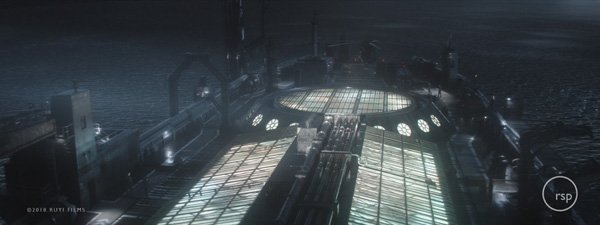
BangBang works as a third party to identify VFX shots in a movie script, determine the optimum approach and organise the vendors. They attend all shoots, manage the plates and ensure their prompt delivery to the teams. The tight budgetary constraint is why the 1,000 VFX shots in 'Animal World', for example, had to be divided between so many vendors. Doing this successfully means keeping up with international talent so that they always have up to date knowledge of who can deliver the best possible quality for specific types of shots, at the most competitive prices.
John said, “Continuity is a larger concern when multiple vendors contribute to a project. However, the creative shots that need art direction and a wide range of skills require the top talent, of course, while the less skilled tasks can be dispersed to companies who are able to commodify the work to an extent. In this way, we optimise the available funds. For 'Animal World', the vendors were mainly located in Canada, China, Thailand, India, New Zealand and Australia. So far, UK and US companies still tend to be too expensive.” He is constantly aware that his company is responsible for about one-third of the production budget of a film like 'Animal World'.
China's Learning Curve
"Production companies in China realise that communicating accurately and clearly with VFX teams is essential, and want to learn as much as they can about the work, the artists and how to collaborate,” John said. “For example, film crews are not yet accustomed to having VFX teams working on the sets with them. Therefore, BangBang occupies a critical position, keeping access open between the vendors and the producers. We also help with quality control, for example, which is carried out differently in China, and try to make production and post processes more systematic.
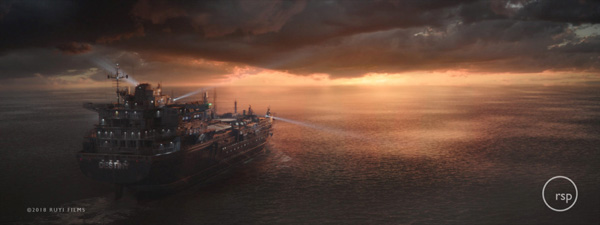
“The budgetary constraints call for a different business model for VFX production than exists in Hollywood. Pre-production becomes crucial as a means to prevent errors and wasting time by planning every shot, and organising all equipment and staff. On 'Animal World', BangBang worked alongside previs specialists The Third Floor to finalise as many decisions as possible before the shoot. More checking of shots is done while everyone is still on set to avoid costly repairs in post, and VFX editing and post-vis play larger roles.”
Survivor
The story for 'Animal World' comes from Nobuyuki Fukumoto’s manga titled 'Ultimate Survivor Kaiji' in which the young protagonist Zheng Kaiji finds himself trapped on a gambling ship named 'Destiny', operated by a menacing impresario. Kaiji is forced to take part in a violent game, the stakes of which continuously shift against his favour.
'Animal World' marked RSP’s first major project for a Chinese film production aimed at an international audience. The sequences they were awarded included a dream sequence, a car chase inside a tunnel, and a CG hero shot of the 'Destiny' exterior, the hulking freighter that has been turned into a floating casino, the film’s primary location. Inside the casino we also meet an unusual-looking creature playing cards. John said, “Yan Han, our director, was particularly attracted to RSP’s work on X-Men: Days of Future Past'' and wanted to bring that talent into key sequences in 'Animal World'.”
Tunnel Chase
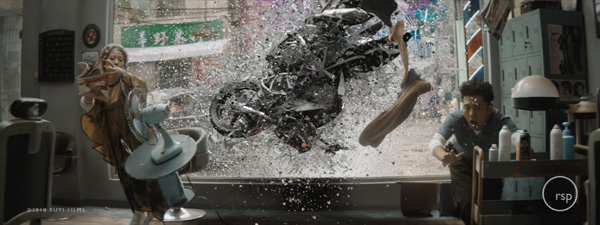
One of the film’s most exciting sequences is an elaborate car chase in which Kaiji, driving a BMW coupe, is pursued by ninjas on motorcycles through a crowded city and into a tunnel. “There’s a lot happening in the tunnel - speeding cars, collisions, gunfire, explosions - and our job was to make it look as fast and dangerous as possible,” said RSP's VFX Supervisor Malte Sarnes. “Most of it was far too dangerous to shoot practically, so the motorbikes, the hero car and other vehicles had to be built in CG.”
Therefore, pre-vis was essential. Each bit of action was choreographed to the millisecond. From storyboard stage, John explained that 'toy-vis' was recorded on an iPhone and sent to The Third Floor. Toy-vis blocks out the action of a sequence with scaled-down puppets and models, recording the moves in a video and then cutting together the footage as required. That sequence can be used on set, or in this case by The Third Floor, to guide the DP and director. It also shortened the pre-vis artists' job and avoided lots of trial and error on their part. They could get to the heart of what the production really wanted, sooner.
To make the sequence look fast and furious, certain elements were shot with different techniques - on gimbals, on wires, against green screen and so on, to plan for handling in post. At this point, the VFX vendors were still undecided and the production consulted independent VFX supervisor Jim Rygiel for advice on approaches to the effects and, from there, on suitable vendors.
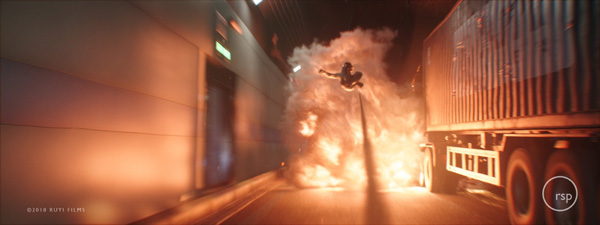
VFX Editing
After the shoot, the previs was used to edit the material into a rough cut, making it clearer to RSP what they would need to do to support the story with FX, 2D and CG elements for what couldn't be shot practically, which was quite a bit. During that process, RSP also made suggestions for the edit to make the live action and effects flow together better and look more exciting.
The studio’s 3D team produced CG models of the BMW, the motorcycles and other vehicles, including a truck that collides with one of the bikes, causing it to explode into flames. All the vehicles had to be perfectly photoreal so that practical and CG elements could be used interchangeably. Furthermore, the hero vehicle suffers more and more dents and scrapes as the scene progresses.
The studio’s 2D team assembled the scene into its final form, placing CG vehicles into the background environment and adding actors and stunt talent shot as separate elements, including a ninja who crashes through the windshield of the BMW. Pyrotechnics and other environmental FX added extra thrills.
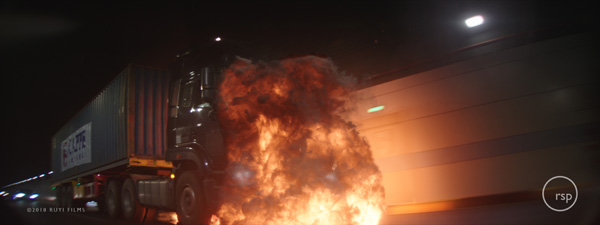
Rigging and Shading
CG Supervisor Ryan Kirby said, “The rigging and shading was quite involved, because the cars are all metal and have headlights, taillights and rubber tires.”We knew the only way to integrate our CG vehicles, digi doubles and effects perfectly into the sequence was to recreate the highway tunnel in CG.
“We modelled and shaded the tunnel asset based on the data and photography we had. There hadn't been a lot of time for the shoot within the tunnel, so our resources were less than ideal. The Layout team then checked the spatial continuity in each shot - including when the tunnel dipped or curved.”
From there the lighting team developed a light rig that would procedurally place an accurate representation of each lamp along the sides of the tunnel roof. It was important match these lights to the CG vehicles in order to create the correct reflections and match the feeling of motion and speed of any cars shot on set.
Only a Dream
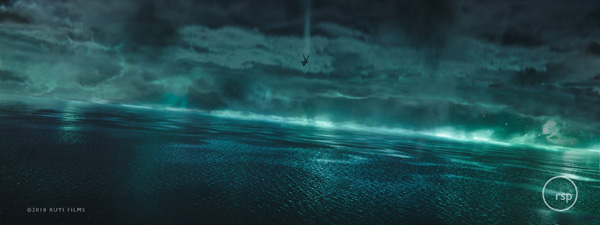
Many of the film’s scenes have a hallucinatory quality. In RSP’s longest sequence, taking up about 90 seconds of screen time, Kaiji wanders dejected through a door of the casino and is suddenly tumbling through space. He falls through the clutches of a claw-like patch of clouds before landing in an ocean where he is attacked by giant sharks, and is only saved when the ocean magically freezes over.
Except for Kaiji, everything in the scene is CG. “Yan Han wanted it to feel trippy and creepy at the same time,” said Malte. “We went through many iterations with him and John Dietz. It was hard to get the tone just right, because it’s so subjective. It was the most challenging, and the most enjoyable, scene in the film.”
Because so much CG was required for the hallucinatory sequence, in some ways the groundwork done in pre-production proved to be underdeveloped in terms of the client's expectations. Consequently, a group of RSP's artists needed to help create a pre-vis sequence that showed more accurately what the teams should work toward regarding the looks of each of the four environments. Each of these had to not only represent a portion of a single camera move but also transition into its own scale.
Four Transitions
It starts with the hero occupying the easily definable scale of a corridor, but then transitions into undefined space and then a water environment, and finally the very small scale of a frozen droplet. Creating all of these required a lot of back-and-forth with the director and many versions, which RSP kept to refer to during the twice-weekly Cinesync meetings RSP and BangBang held with the client. Referring to the previous versions worked as a means of communicating the progress they were making, and where they were headed.
Working out the camera move and the looks of the environments in advance meant the production was much better prepared for the shoot, and that RSP would receive live action material that worked with the CG shots they were building.
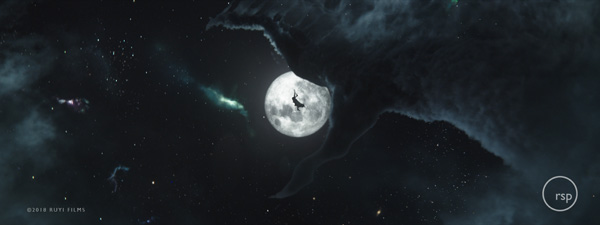
Senior Effects Artist David Bemi talked about the claw-shaped hand effect, using the animated model of a hand as a cage to deform a volumetric simulation created in Houdini. “This simulation allowed us to sculpt clouds and match them to the previz accurately and was, in turn, used as a source for a particle simulation to form the tendrils trailing behind. Those points were then rasterized - that is, turned into volumes - and merged with the core of the hand,” David said.
“Various shader noises then broke up the shapes and added complexity and realism to the cloud look. The ominous sensation of the hand reaching for the hero is accentuated by the back lighting from the moon.”
Freezing Sharks
The sharks were first modelled based on real life Great White sharks footage, fully rigged to allow the animators to create a circle of teeth lurking around Kaiji, and then scaled up to about ten times actual size to emphasise the hero's predicament. Freezing the ocean took a combination of several more techniques available in Houdini, designed to reveal the cave by freezing the ocean. They started by procedurally modelling an ice cave based on references from a real cave in Iceland.
“It begins with a point simulation based on the shark’s velocities and the distance from the pre-generated ice cave,” said David. “As the sharks slowed down and intersected with the cave wall, ice was grown to form the ice cave, very similar to how real crystal branches out and grows. This base simulation drives all layers needed to achieve the director’s vision. The core layer would be the generated points meshed as a geometry, with another layer of crystals instanced on top of it.”
Finally, a dry-ice volumetric simulation was added to represent the freezing transition from liquid to solid. Those elements were then exported for the Look Dev team to write an ice shader to render all elements of the effect in Arnold.
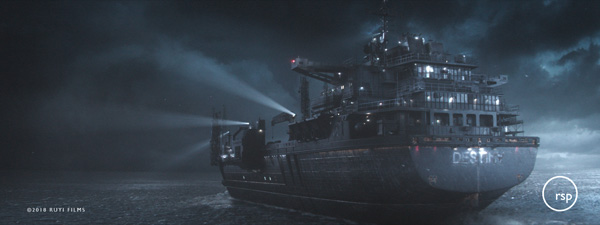
Destiny
Key establishing shots revealing an exterior view of the Destiny appear at the opening of the film when it was important to set a tone because that's the where most of the movie takes place. John said, “The audience needs to get a feeling of where the hero is trapped. Both the ship and the surrounding ocean environment are digital builds. The ship appears to be a chemical tanker that was transformed into a casino - lots of secret military activity happens on deck while the gambling carries on below.”
The artists spent months honing the details of the ship, the sky and the ocean. The length and prominence of the sequence made it essential to get the details right. As the audience has time to scrutinise the work, they carefully added flares, lights and wisps of smoke in the background to increase the sense of realism.
Casino Creatures
RSP’s character animators got to apply their creativity to a sequence involving tall, reptilian creatures called Hightower. In other scenes, they are vicious warriors, but here they sit in the casino relaxing over a game of cards. Weta Digital created the original, basic asset, which they then detailed and animated for their own shots.
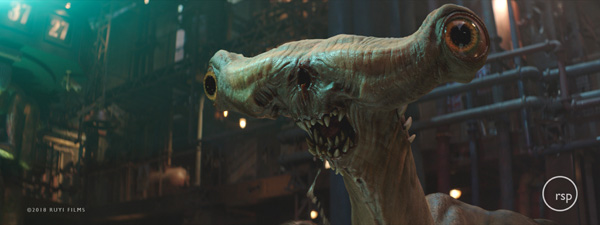
RSP's shots, however, called for special effort in the facial animation. “We also had to modify the asset for our sequence to give it hands, requiring high-definition muscle simulation,” said Ryan Kirby. “Because we had them so close to camera we needed to make sure that the performances were up to scratch - they had to act a little more, even be a bit silly.”
At first, the creatures were expected to be the hardest part of RSP's work but, compared to the hallucination sequence, turned out to be more fun than hard. The creatures are reptilian but possess essentially human traits. Video that the animators recorded of themselves acting through the scenes was their main source of reference, not animals, and made it interesting to transfer human characteristics over to the models.
Continuity between the work by Weta and by RSP was also not as difficult as expected. The director's brief was visual, so each team could see exactly what was required. Early on, BangBang had completed the first pass of the character design locally in China with an artist named Feng Zhu, which they could refer to.
Performance First
Deciding that the performance was more important than other aspects of the characters, lead animator Victor Glushchenko began hand-drawing 2D animation over the plates using TV Paint to get sign off on the animation first. This way, they could iterate quickly and zero in on the precise timing, as well as direct the modelling/creature FX team about what the Hightower needed technically, ahead of working out the 3D lighting, textures and other details on the models.
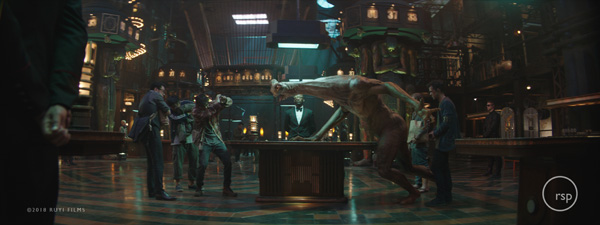
Anto Bond, head of modelling, said, “We decided to transfer the Hightower form and details onto our base human model, based on our particular shots. For example, in contrast to the crab-claw arms seen in Weta's shots, our version needed human hands to hold the playing cards and slam them down on the table.
“We used Mudbox to transfer all the maps onto our base human topology and UVs while also sculpting the detail of the new hands and blending them into the existing detail, and beefed him up a little to make him more veiny and muscular. Using our own topology allowed us to produce the facial performance the client wanted and give us ultimate control, and meant our creature FX department could use its own muscle and skin system. That became important when our Hightower's human form morphs into the full-blown creature.” rsp.com.au


















